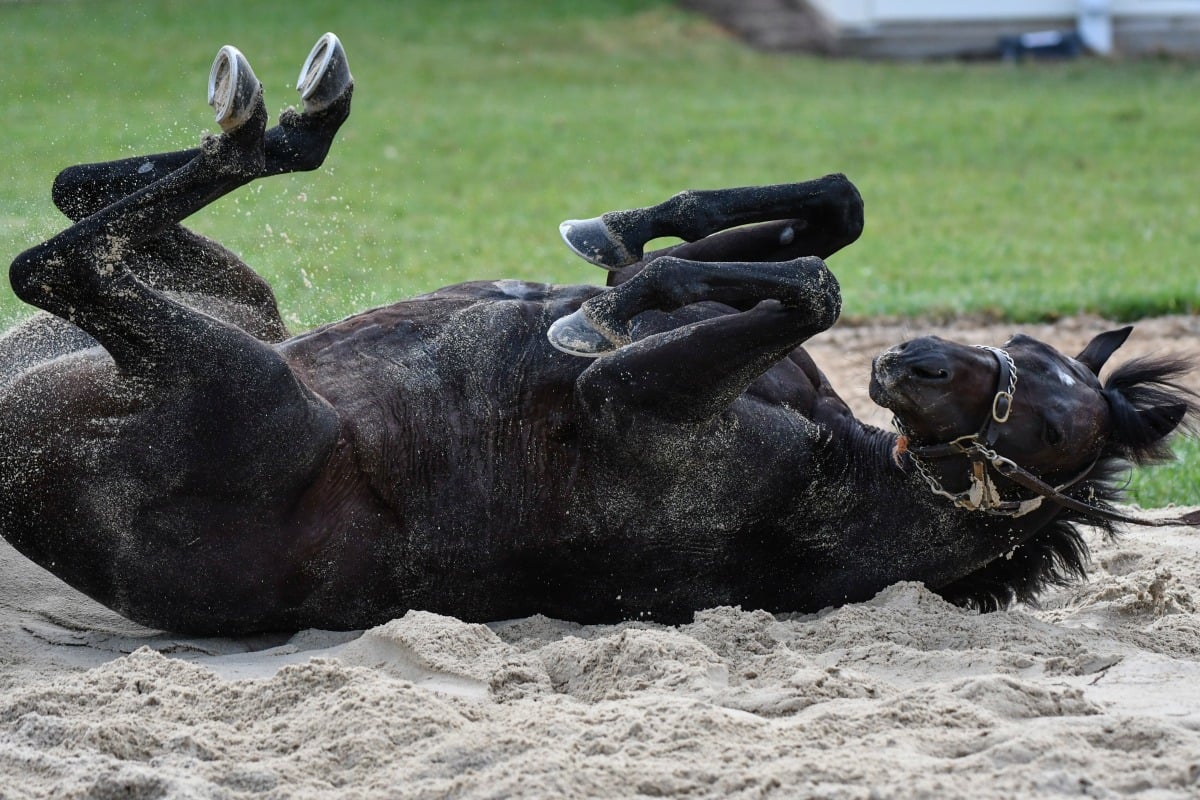
Moments before the 2018 Melbourne Cup race was about to begin, four-year-old racehorse The Cliffsofmoher appeared agitated.
According to Seven commentator Richard Freedman, he was “melting like an ice-cream… really sweating up badly”.
Seconds into the race, as he approached the turn out of the straight for the first time, the horse ‘broke down,’ suffering a fractured right shoulder.
Veterinarians rushed to erect a tarp around the fallen horse, but not long after 3pm, amidst the Cup celebrations, it was confirmed that The Cliffsofmoher had been euthanised.
Unlike in previous years, when the death of racehorses at the Melbourne Cup has been reported as a side story, sometimes not until the day after the event, in 2018, the death of The Cliffsofmoher was the story.
Haunting images of the horse’s lame leg were everywhere. It was the ethical landmine we could no longer look away from.
The Cliffsofmoher becomes the 6th horse to die as a result of the #melbournecup since 2013. Highlights the very real risks to horses from racing.
— RSPCA Australia (@RSPCA) November 6, 2018


Top Comments
You support shutting down the whole Thoroughbred Racing industry. Putting ten of thousands of people out of work, making them struggle to feed their families, many would suicide as a result. It will be interesting to see is you stand behind your convictions as stated above and push to have the industry shut down. I bet you don't.
And why is a horse being used for dog meat any worse than beef, lamb or pork being used? What makes them more important? Are you a vegetarian/vegan?
No I didn't watch the Melbourne Cup or any other race that day.
Reminds me of the whole greyhound thing - this is the sort of person that Mike Baird was listening to when he made the decision to close it down, and the backlash was so severe that he eventually stepped down as premier.
In both cases I think all of the stakeholders need to be involved so that actionable plans and regulations can be developed, and the repeatedly non-compliant ones are those that get shut down.
if your “job” requires you to cause harm and suffering to others that doesn’t invoke a lot of sympathy from me. Find other work, people change jobs/careers all the time. People need to move with the times.
Retail stores are closing down because everything is moving online. Journalists losing jobs because magazines have folded. It’s reported in the news but I don’t hear of anyone suggesting we keep shopping in stores or buy newspapers so people don’t lose their jobs.
Horse racing won’t be banned over night. As much as i’d like it to. Which means as the years go by less people will attend theses events and less people will be required to be employed. You won’t have tens of thousands of people suddenly unemployed overnight and all looking for work at once.
I agree with Pauline. I’ve been involved in racing and equestrian sport and the racehorses I saw were every bit as well looked after as any show pony or eventer. Not one person involved caused them any harm or injury; I saw more suffering among sheep and beef cattle on farms. All were rehomed or bred from after retirement. Many, many racehorses go on to have long, happy and healthy lives. I’m sure there are exceptions but I don’t think it’s necessary to shut down the entire industry.
Yes to this. So sad it hurts my heart. We humans are capable of more compassion and care and need to stand up for all creatures great and small.
The true change and revolution begins which each of us. We can be the change we want to see in the world xo